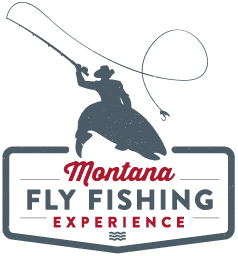Clark Fork River
Overview
The Clark Fork, or the Clark Fork of the Columbia River, is a river in the U.S. states of Montana and Idaho, approximately 310 miles (500 km) long. The largest river by volume in Montana, it drains an extensive region of the Rocky Mountains in western Montana and northern Idaho in the watershed of the Columbia River. The river flows northwest through a long valley at the base of the Cabinet Mountains and empties into Lake Pend Oreille in the Idaho Panhandle.
The Pend Oreille River in Idaho, Washington, and British Columbia, Canada which drains the lake to the Columbia in Washington, is sometimes included as part of the Clark Fork, giving it a total length of 479 miles (771 km), with a drainage area of 25,820 square miles (66,900 km2). In its upper 20 miles (32 km) in Montana near Butte, it is known as Silver Bow Creek. Interstate 90 follows much of the upper course of the river from Butte to northwest of Missoula. The highest point within the river’s watershed is Mount Evans at 10,641 feet (3,243 m) in Deer Lodge County, Montana along the Continental Divide.
The Clark Fork is a Class I river for recreational purposes in Montana from Warm Springs Creek to the Idaho border.
The Clark Fork should not be confused with the Clarks Fork of the Yellowstone River, which is located in Montana and Wyoming.
Named after Captain William Clark of the Lewis and Clark expedition, this major fork of the Columbia River is often referred to as two separate rivers. The upper 125 miles above Missoula and the 120 miles below the confluence of the Blackfoot River to the confluence of the Flathead River near Paradise, Montana. Montana Flyfishing Experience concentrates our fishing on the Clark Fork River from the town of St. Regis, Montana downstream to the town of Paradise, Montana below the confluence of the Flathead River and the Clark Fork River. This section, known as the lower Clark Fork River flows through pine forest on its way to the canyon section. Sightings of wild Bighorn sheep are common in the canyon section. This part of the Clark Fork River is known for its large, hard fighting rainbow trout. Rainbow trout are not the only species you will catch along the way. The lower Clark Fork River is also home to brown trout and cutthroat trout, offering the angler the chance to catch 3 different species of wild trout during their fishing day. Small-mouth bass can be a bonus catch after the Clark Fork River meets the Flathead River near the town of Paradise, Montana.
The lower Clark Fork River is characterized by it’s long meandering runs, boulder strewn banks, and endless riffles and drop-offs. Dry fly fishing is Montana Fly Fishing Experience guides’ preferred method of fishing the Clark Fork River. Dry fly fishing normally starts during the month of April and can last well into November. Drakes, blue wing olives, pale morning duns, caddis and hoppers are just a small sampling of bugs that hatch on the Clark Fork River. Your Montana Fly Fishing Experience guide will carry all the flies you need and be in touch with what bugs are hatching daily.
For visitors coming to Montana after the Labor Day Crowds, fly fishing the Clark Fork River in fall is a great opportunity. Most days you and your Montana Fly Fishing Experience guide will have the river to yourselves and the fishing can be the best of the year. Terrestrials and attractors still work, Duns, drakes, and blue wing olives are still hatching. Fish are eating dry flies, the scenery is amazing with fall foliage, and the water is as beautiful as ever! If you’re looking for a great day of fall fishing, then book a day with Montana Fly Fishing Experience on the Clark Fork River.
Length
310 miles (500 km)

